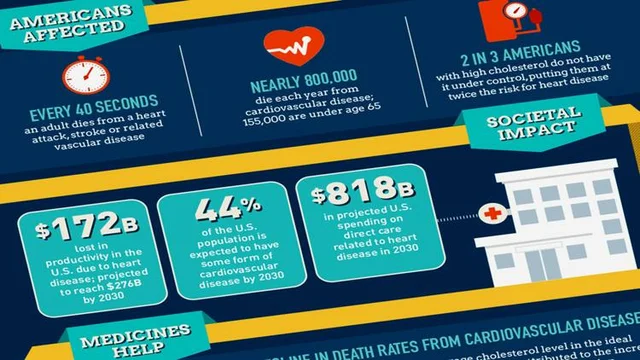7:17 PM About medicine: cardiac rehabilitation has the ability to gain life | |
As part of the South American hearth month celebration in February, let's talk about cardiac rehabilitation. actually what is it? Who needs it? How long will it last? What are the outstanding qualities of cardiorehabilitation? Cardiorehabilitation is a masterfully controlled program that can help people recover from heart attacks, heart surgery, and percutaneous coronary intervention (PCI) procedures, such as stenting and angioplasty. Patients with acquired diseases, these as congestive heart deficiency (CHF) still have a good chance to visit this program. Cardiorehabilitation programs give educational and consulting suggestions in order to help mental patients to increase physiological shape, reduce cardiac signs and make a better healthy heart table. This lowers the risk of future heart problems, covering heart attacks. Cardiac rehabilitation was performed from 36 one-hour sessions (three times a week in the direction of 12 weeks). Any patient is monitored during training to assess blood pressure, heart rate and rhythm. Patients are still evaluated based on their personal needs and limitations; this highlights information that will undoubtedly help to adapt personal exercise programs and introduce certain goals. The program can help patients develop a healthy lifestyle attachment through alternate exercises and risk configuration. Studies have shown, in fact, that patients who have visited more than 36 rehabilitation sessions, the risk of death was 22 percent lower than those who visited only 12 sessions, and 47% lower than those who visited only once session. An additional advantage of the role in a structured program of cardiac rehabilitation is considered to be the interaction with a person that happens without fail. During the program, these interactions sometimes lead to fresh friendly relations. This social nuance makes a supportive environment that inspires everyone to strive to achieve their own goals. Patients still make contact with the staff, in fact that allocates them the probability to ask questions or get support, if they feel any difficulties with health. Your doctor has the ability to address you to the program, or you can address to the doctor or nurse for a recommendation. The intentions of health care and Medicare often embrace the rehabilitation of the heart in the direction of the first 2 or 3 months. On a par with cardiac rehabilitation there are secondary prevention goals and management basics that patients are required to follow in their footsteps: Stopping Smoking The task is an absolute stop of Smoking and the inaccessibility of the influence of tobacco smoke on the environment around. * At any visit, learn about the patient's state of use of cigarettes. * Recommend any patient who drinks cigarettes to throw a smoke. • Assessment of patient readiness to throw smoke. * Offering support to the patient by counselling and developing the intention to care. * To carry out further supervision, appointment to special programs (MT Quit Line) or pharmacotherapy (nicotine patch). * The urge of the patient to avoid the influence of tobacco smoke around the work and home. Blood pressure control The task of blood pressure is the least 130/80 mm Hg. art. (at rest) or the least 120/80 mm Hg. article if painful diabetes or acquired kidney disease. All patients are required to start or maintain a change in lifestyle, weight management, increased physiological energy, moderation of alcohol, sodium reduction and increased consumption of fresh fruits, vegetables and low-fat dairy products. Patients with blood pressure greater than 140/90 mmHg (at rest), (or 130/80 mmHg for individuals with acquired kidney disease or diabetes) have all chances to urge, in fact that the drug brought their blood push down to a healthy range. Variants of medicines for the healing of blood pressure have all chances to connect beta-blockers, ACE inhibitors, calcium channel blockers or diuretics. Bodily energy All patients are required to rush to 30-60 minutes of aerobic energy of moderate intensity (eg, brisk walk) in the bulk, preferably all days of the week. This should be complemented by an increase in daily energy (e.g. walking breaks at work, gardening, housework). Resistance training must be added 2 days a week. Diet A healthy heart table connects unsaturated fats, whole grains, a large amount of fruits and vegetables and omega-3 fatty acids. All these products can help to defend against coronary heart disease. Fat intake should be reduced to less than 30% of total calories. Cholesterol limitation to less than 300 mg per day. Some examples of products that are luxurious in cholesterol are eggs, shellfish and butter. Change these products, luxurious cholesterol, the best products, these like fruits and vegetables. Try to ignore the production of food with butter, using unsaturated fats such as olive oil and canola oil. Reading the label is quite important; choose moving which is low sodium or sodium fluently. Change the sodium with the freshest herbs and spices in order to return the taste to the food. In the end, lowering calorie intake is considered a necessary moment in the diet. Weight costs will increase the highest density lipoproteins (HDL), which are considered "good" cholesterol, which defends the heart. Reduction only 500 calories per day in the direction of the 7 days will result in the loss of the 1st pound of weight. All of these points urge long-term commitment and are bound to be integrated into our daily practice of a healthy lifestyle. Let's all accept the conclusion to reduce the number of deaths between American men and women, cardiovascular disease, and create all possible, in order to follow in the footsteps of these councils. | |
|
| |
| Total comments: 0 | |
